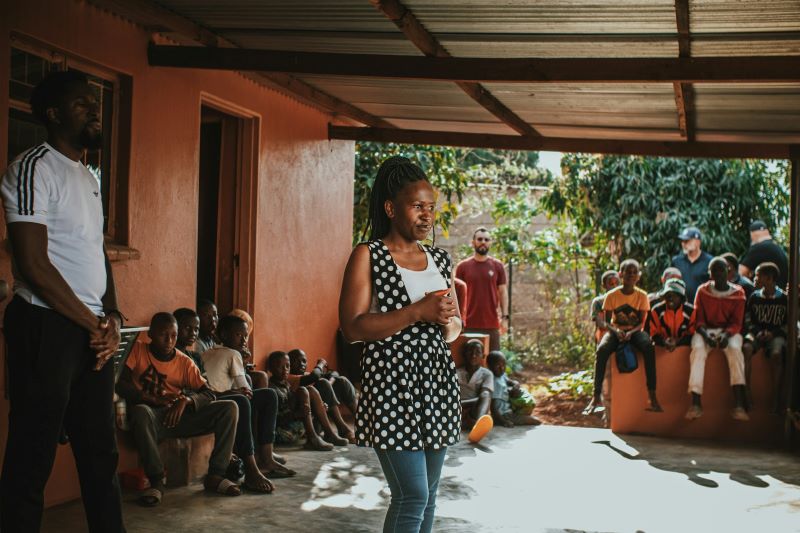USAID Programs in Eswatini
 Eswatini, due to its geographical location, relies on South Africa for the majority of its trade, with 65% of its exports and 75% of its imports going to South Africa, meaning that this is a large contributor to Eswatini’s economy. Despite the GDP per capita in Eswatini remaining relatively high, standing at $3,823 in 2023, nearly 70% of the population lives in poverty, with diseases such as HIV and AIDS having a devastating impact on citizens. With education quality being insufficient, alongside access to education, many do not receive an education that will prepare them for the workplace.
Eswatini, due to its geographical location, relies on South Africa for the majority of its trade, with 65% of its exports and 75% of its imports going to South Africa, meaning that this is a large contributor to Eswatini’s economy. Despite the GDP per capita in Eswatini remaining relatively high, standing at $3,823 in 2023, nearly 70% of the population lives in poverty, with diseases such as HIV and AIDS having a devastating impact on citizens. With education quality being insufficient, alongside access to education, many do not receive an education that will prepare them for the workplace.
USAID Programs in Eswatini
Whilst there are several USAID programs in Eswatini, most of its work in Eswatini, and Southern Africa as a whole has been a part of the President’s Emergency Plan for HIV/AIDs Relief (PEPFAR), which works to control the HIV/AIDS pandemic in at least 50 countries across the world. The project has four main priorities within its operation: making progress towards HIV/AIDS control in more than 50 countries across the world, helping partner countries in spending every dollar they receive on creating data-driven policies, giving access to support to the populations that the by HIV/AIDs impacts the most and providing them with innovative solutions that are appropriate to their situations while utilizing partnerships in several different sectors to increase their impact.
After partnering with USAID and PEPFAR in 2007, Eswatini’s first Swaziland HIV Incidence Measurement Survey (SHIMS) in 2011 proved HIV rates in Eswatini were relatively high. Only less than 62% of the infected population aged between 18 and 49 knew their status, and out of those, only 73.1% were undergoing treatment and were virally suppressed. However, after SHIMS3 in 2021, these figures had improved significantly, with 93.7% of the population living with HIV knowing their status, and of this, 96.2% were undergoing treatment
DREAMS
USAID introduced the Determined, Resilient, Empowered, AIDS-free, Mentored and Safe (DREAMS) program in Eswatini with help from PEPFAR in 2015, to help teenage girls and young women by addressing factors that make them susceptible to HIV/AIDS. The program offers services such as access to pre-exposure prophylaxis (a drug that can prevent the acquisition of HIV), education subsidies and wider access to HIV screening, testing and counselling. In Eswatini, young girls also have access to business mentorship with Cabrini Ministries, as youth unemployment currently stands at 58%, and this mentorship provides young girls with employment opportunities in a social climate where job opportunities for women are sparse.
In 2024, PEPFAR announced that it is looking to roll out DREAMS NextGen, in partnership with USAID, which will aim to take a specific approach for the situation in each country, by expanding the services already in place and specific services for women in each partner country. This USAID program in Eswatini is the next step within the DREAMS program, which aims to create “supportive environments” for teenage girls and young women, with aims including strengthening families with social protection with subsidized education costs and parent and caregiver programs and mobilizing local communities to promote change through a roll-out of school and community HIV and violence awareness and prevention.
The Future
It is clear that with the help of USAID programs in Eswatini and schemes such as the PEPFAR, the country will be able to sustainably develop beyond USAID programs and control the HIV/AIDs pandemic. With further support from both of these organizations, the people of Eswatini will be able to prosper, with access to things like better and subsidized education that will better prepare young people for the workplace and better healthcare to improve their quality of life.
– Freyja Stone
Freyja is based in Manchester, UK and focuses on Global Health and Politics for The Borgen Project.
Photo: Unsplash
